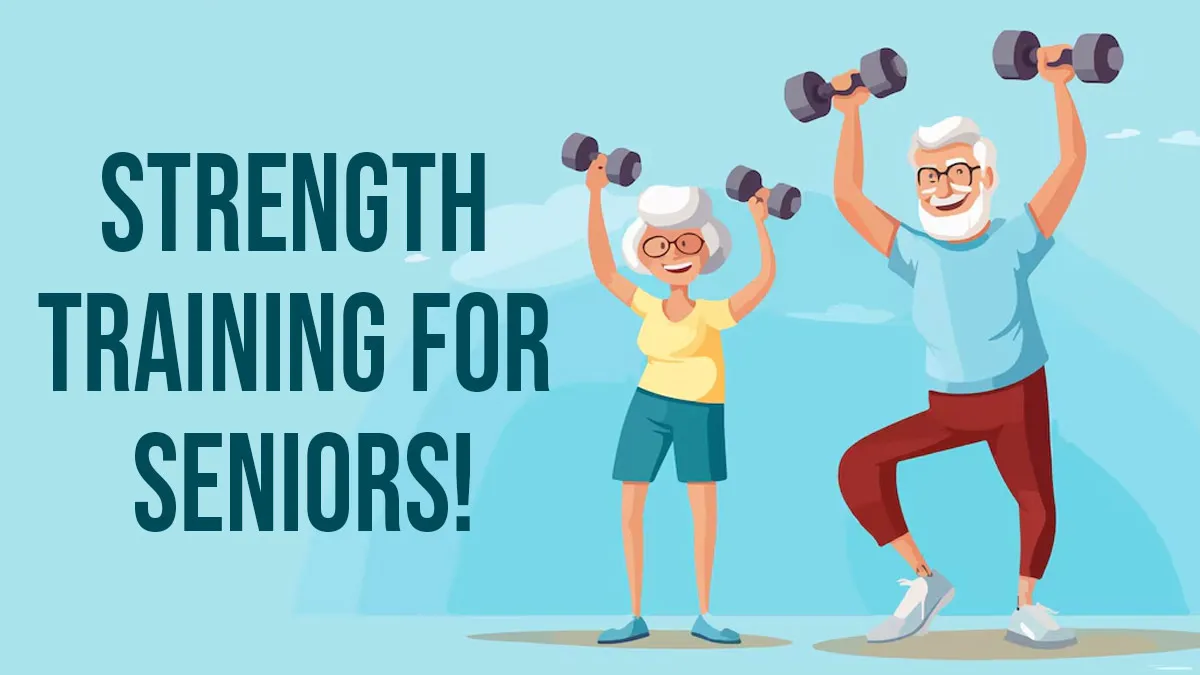
Aging often brings challenges like diabetes, joint pain, and muscle loss. But there’s good news: strength training can help seniors tackle these issues head-on. Many assume lifting weights is only for the young, but experts disagree. Regarding the same, an expert explains how it is important to maintain muscle mass in the 50s or 60s. Read ahead to know why strength training matters and how seniors can start today where no heavy weights or gym memberships are required.
Table of Content:-
Why Seniors Need Strength Training
View this post on Instagram
As we age, muscle loss speeds up. This isn’t just about looking weaker—it affects daily life. Simple tasks like climbing stairs or carrying groceries become harder. Worse, weak muscles raise the risk of falls, diabetes, and chronic pain. Navneeth Ramprasad, Founder, Praan, Bangalore, explains, “For seniors with diabetes, arthritis, or high cholesterol, more muscle means better health. It’s not about lifting heavy—it’s about staying independent.”
Here’s the problem: metabolism slows with age, and lost muscle makes it worse. Strength training reverses this cycle. Even light exercises, done regularly, rebuild muscle and boost energy.
How Strength Training Helps Seniors

The expert suggested a few ways in which strength training may help seniors between the ages of 50 and 60.
Controls Diabetes
Muscle burns sugar. More muscle means better blood sugar control. A study in the Journal of Diabetes Research found seniors with type 2 diabetes who did resistance training lowered their HbA1c levels (a key diabetes marker) significantly. Navneeth says, “Strength training isn’t optional—it’s a lifeline for managing diabetes naturally.”
Eases Joint Pain
Weak muscles strain joints. Strengthening them supports knees, hips, and shoulders. For example, stronger thighs mean less pressure on arthritic knees. “I’ve seen seniors ditch painkillers after just weeks of light resistance training,” says Navneeth.
Builds Confidence and Independence
Falls are a top fear for seniors. Strength training improves balance and coordination. Simple routines—like chair squats or step-ups—help seniors move safely, reducing fall risks.
Lifts Mood
Exercise releases mood-boosting endorphins. For seniors feeling isolated or anxious, strength training offers mental health benefits too.
Easy Exercises to Start Today
-1739873526324.jpg)
Navneeth’s advice? “Aim for 3 sessions weekly, 20-30 minutes each. Use bodyweight or resistance bands, no fancy gear needed.” Try these beginner moves:
Chair Squats
- Stand in front of a chair, feet hip-width apart.
- Slowly sit back, tap the chair, and then stand. Repeat 10 times.
- Why it works: Strengthens legs and improves balance.
Band Pulls
- Sit on a chair, and loop a resistance band under your feet.
- Pull the band toward your chest, squeezing your shoulder blades.
- Why it works: Targets back muscles, improving posture.
Wall Push-Ups
- Stand arm’s length from a wall. Place palms on the wall.
- Bend elbows to lean toward the wall, then push back.
- Why it works: Builds arm and chest strength gently.
Heel Raises
- Hold a chair for support. Rise onto toes, then lower slowly.
- Why it works: Strengthens calves, aiding balance.
Tips for Success:
- Start slow. Focus on form, not speed.
- Rest between sessions. Muscles need recovery.
- Track progress. Celebrate small wins, like extra reps.
- Ask for help. A trainer can adjust exercises for safety.
ALSO READ: Knee Pain Relief for Women Over 50: Expert Tips and Easy Exercises
Conclusion
Strength training is a simple yet powerful solution for seniors to manage diabetes, reduce pain, and combat weakness. As Navneeth Ramprasad explains, “The goal isn’t to make them look muscular, it’s to help them stay independent, active, and pain-free for years to come.” By incorporating strength training into their routine, seniors can improve their quality of life and enjoy greater health and mobility.
Also watch this video
How we keep this article up to date:
We work with experts and keep a close eye on the latest in health and wellness. Whenever there is a new research or helpful information, we update our articles with accurate and useful advice.
Current Version